Idea by
Ryder Thalheimer
Call for ideas 2020
Learning from Bella Bella
Learning from Bella Bella
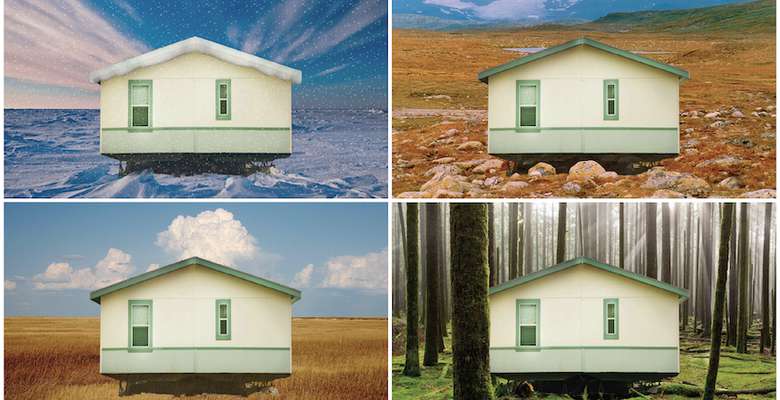
- Systemic changes
The project does not solve a problem but identifies a concern in how homes are designed and built in communities that have been systematically oppressed since the early 18th century. It is comprised of a critique, a response and a suggestion for how architects approach designing and building houses in marginalized communities.
The extreme degree of disenfranchisement of Canada’s indigenous communities provides a stark context for the reconsideration of the designer’s role in providing housing and building community. Though this project identifies challenges that are specific to Canada, the need for an inclusive design process is a global concern. As the world’s populations are fleeing marginalization and migrating to unfamiliar urban centres, the need for a design process that identifies and begins to understand cultural and societal needs will be vital when developing new housing strategies and the new multicultural urban centres of the future.
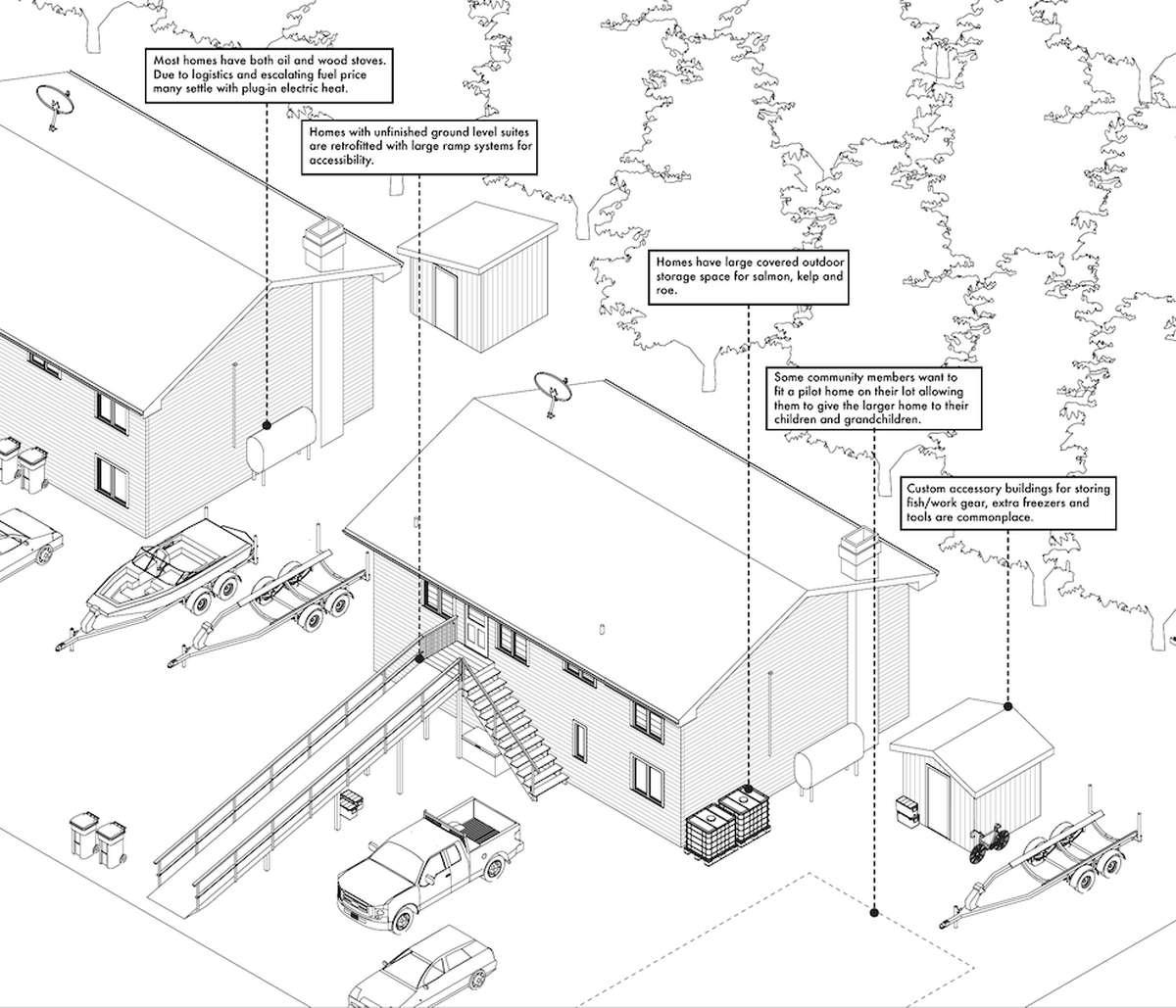
The typical government home in coastal British Columbia is designed around the suburban nuclear family. The kitchen, bathroom, and living area are neatly organized on the top floor with enough bedrooms for mom, dad and their two children. The design of the homes have been simplified to a collection of rooms that have no relationship to their social or regional context. From the pacific rainforest, to the desert and great plains, to the arctic the design of the typical home does not vary
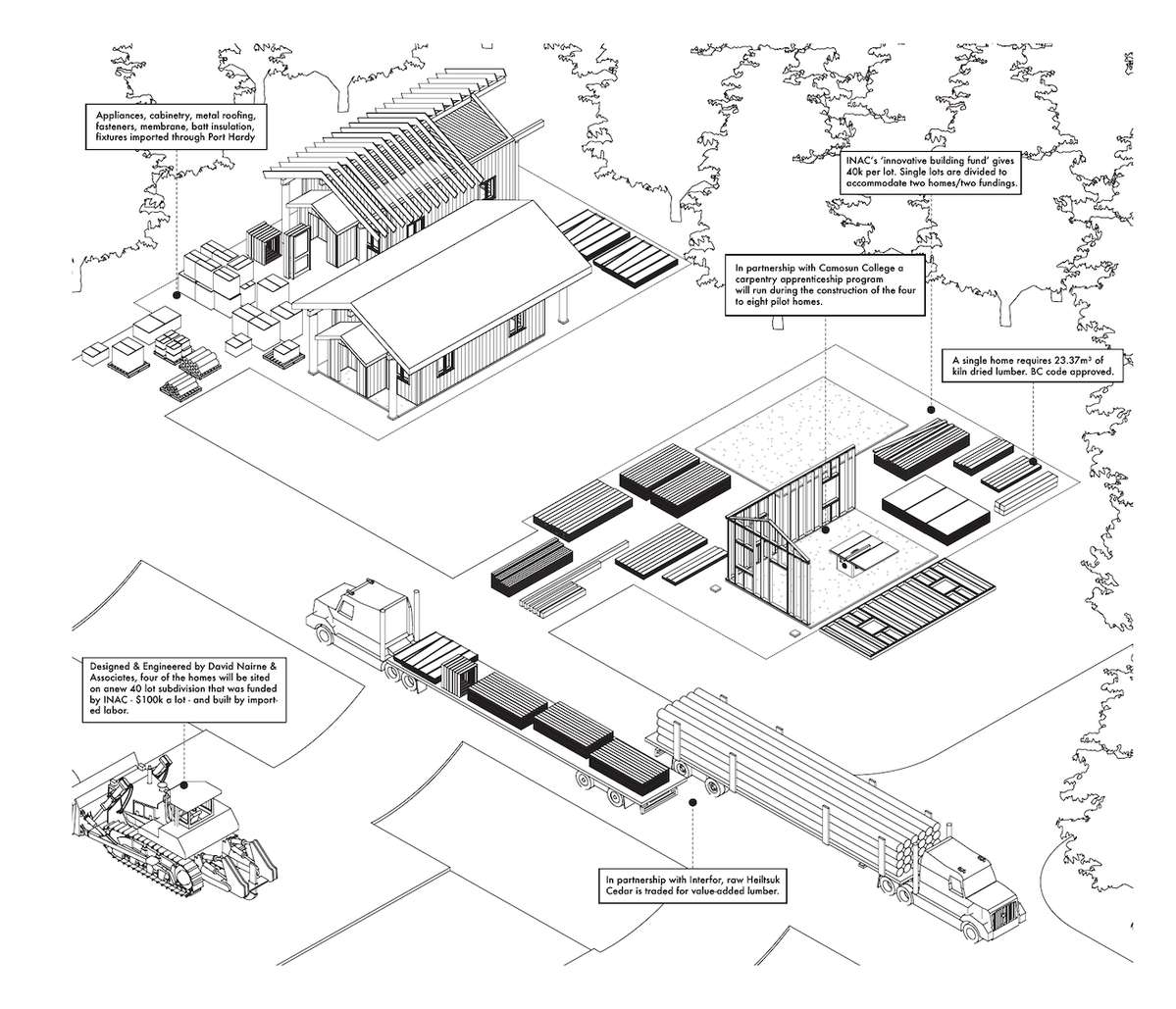
Through the many discussions with the community there were key takeaways that were common in what they wanted: From the floor to the roof cap the house should be made from local timber and be built with local labour
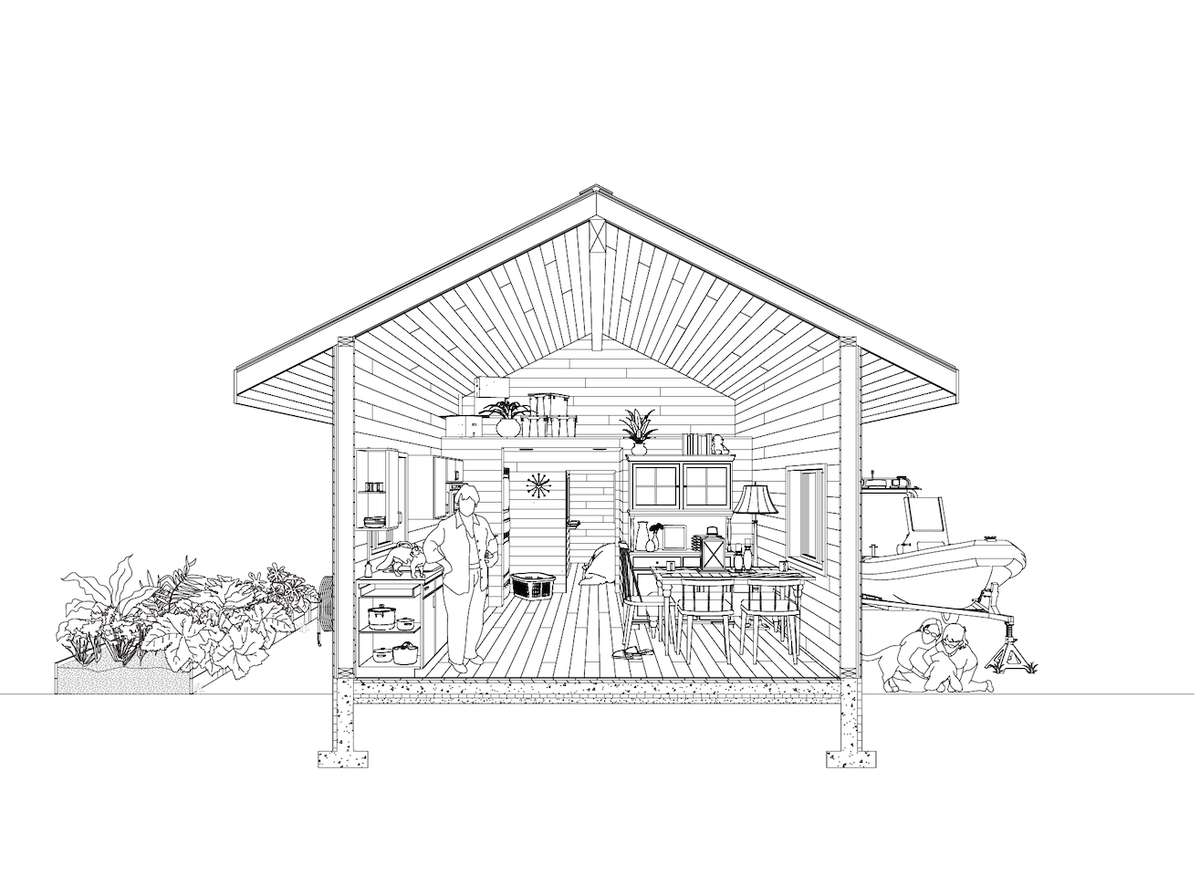
With the small home the community required that the space needed to fulfill multiple programs across different generations. What occurred was a pairing of small spaces that could negotiate between needs of the people that would live in the homes
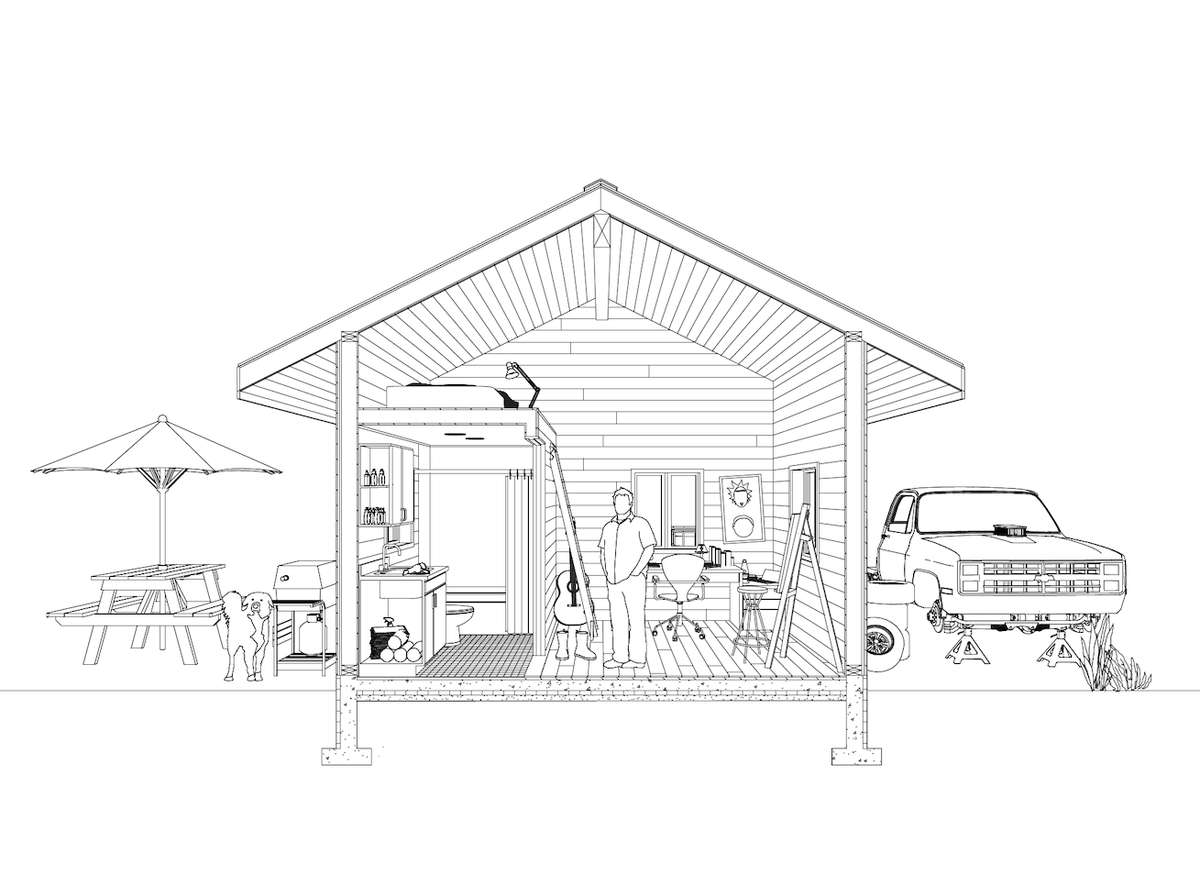
The interrogation of space allows us to find the questions to help identify these important spaces that exist in communities; Like how do you actually use your kitchen? What is your age, demographic, aspirations and how do you see the future of your family and how should your home change? By going back to the conversations we had with the community we can start visualizing the important ideas that aren’t included in the defined constraints of the bedroom, the kitchen, or the living room
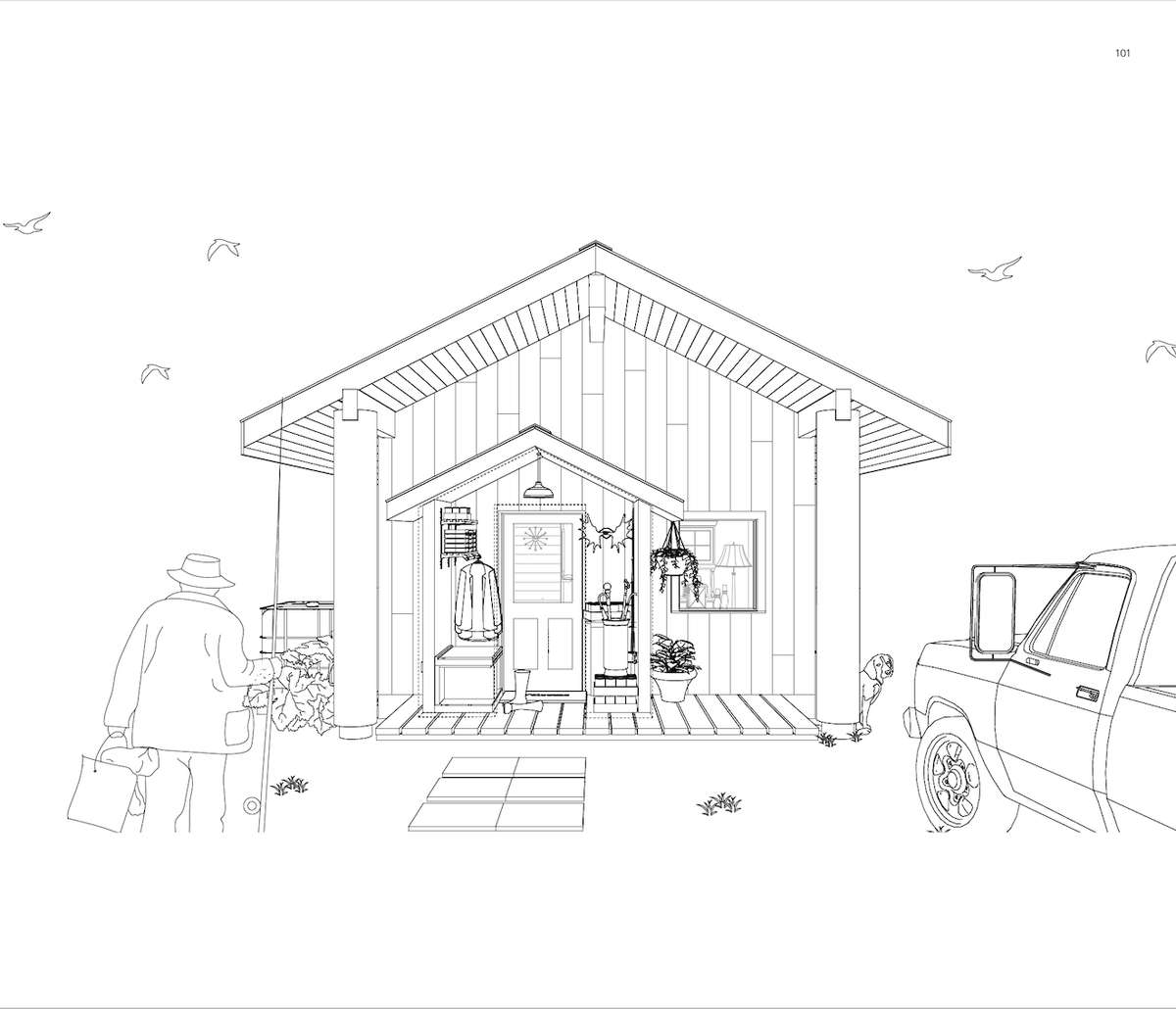
But it wasn’t until we focused on the mudroom where the specifics, and identify of the community became clearly identified. Such a small footprint is used as storage, sitting area, drying rack for rain gear, and as an additional pantry and freezer space during herring season. What this shows is that that are simple but important functional spaces that exist outside of the federally designed constraints of the home that directly respond to the regional and cultural context of a community
Learning from Bella Bella
Learning from Bella Bella

- Systemic changes
The project does not solve a problem but identifies a concern in how homes are designed and built in communities that have been systematically oppressed since the early 18th century. It is comprised of a critique, a response and a suggestion for how architects approach designing and building houses in marginalized communities.
The extreme degree of disenfranchisement of Canada’s indigenous communities provides a stark context for the reconsideration of the designer’s role in providing housing and building community. Though this project identifies challenges that are specific to Canada, the need for an inclusive design process is a global concern. As the world’s populations are fleeing marginalization and migrating to unfamiliar urban centres, the need for a design process that identifies and begins to understand cultural and societal needs will be vital when developing new housing strategies and the new multicultural urban centres of the future.
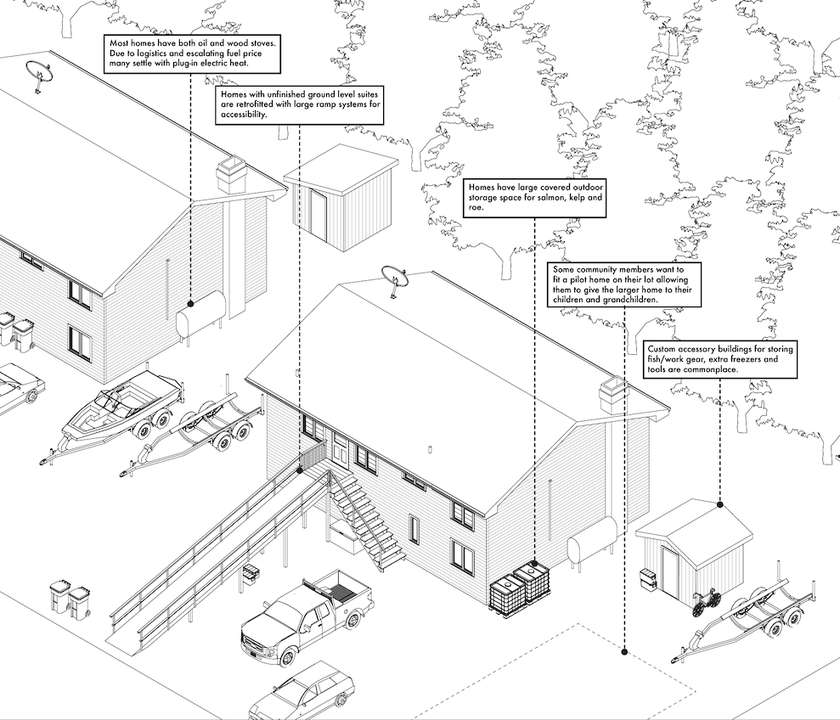
The typical government home in coastal British Columbia is designed around the suburban nuclear family. The kitchen, bathroom, and living area are neatly organized on the top floor with enough bedrooms for mom, dad and their two children. The design of the homes have been simplified to a collection of rooms that have no relationship to their social or regional context. From the pacific rainforest, to the desert and great plains, to the arctic the design of the typical home does not vary
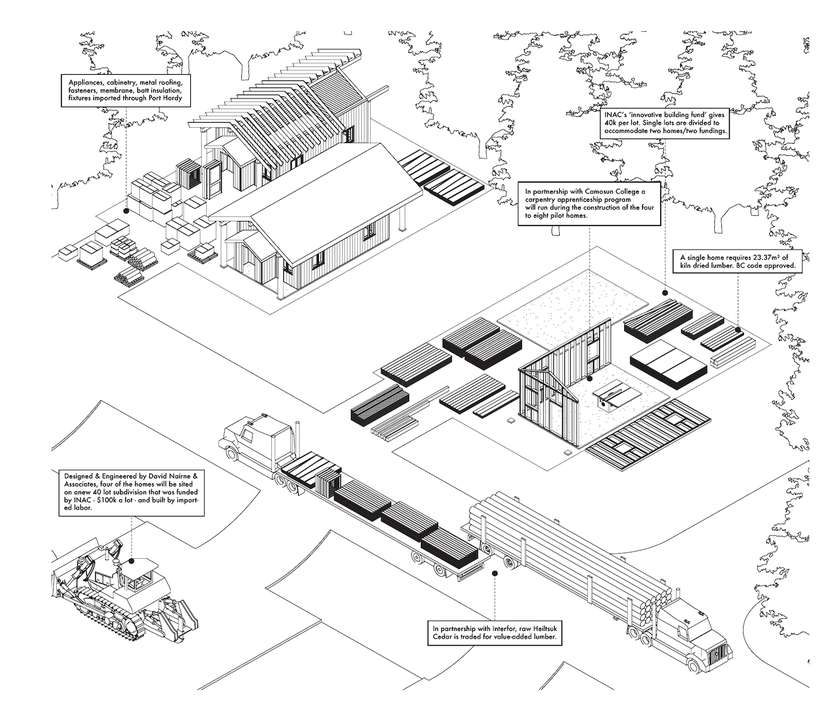
Through the many discussions with the community there were key takeaways that were common in what they wanted: From the floor to the roof cap the house should be made from local timber and be built with local labour
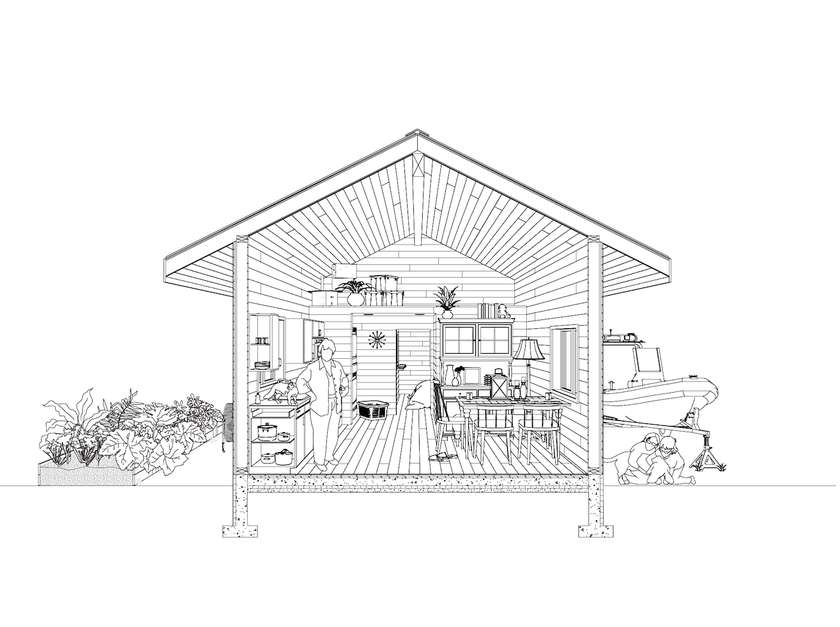
With the small home the community required that the space needed to fulfill multiple programs across different generations. What occurred was a pairing of small spaces that could negotiate between needs of the people that would live in the homes
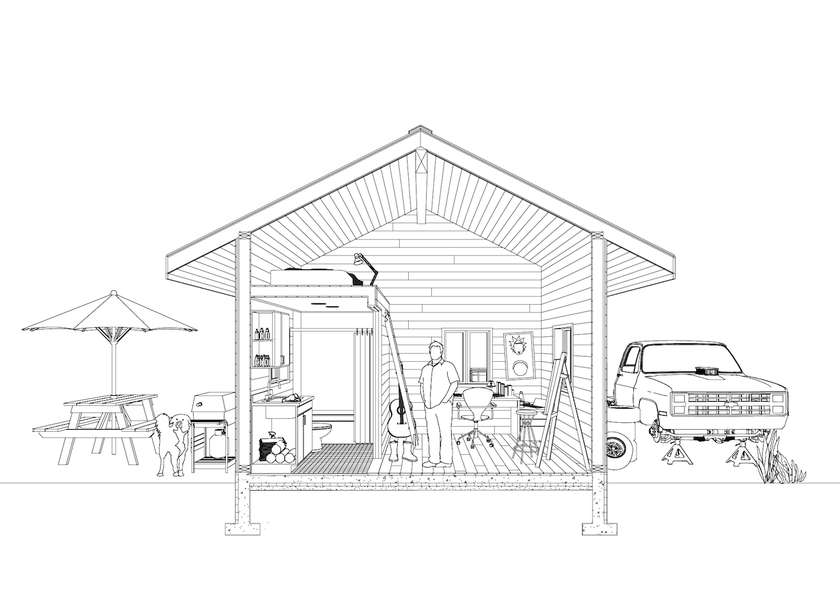
The interrogation of space allows us to find the questions to help identify these important spaces that exist in communities; Like how do you actually use your kitchen? What is your age, demographic, aspirations and how do you see the future of your family and how should your home change? By going back to the conversations we had with the community we can start visualizing the important ideas that aren’t included in the defined constraints of the bedroom, the kitchen, or the living room
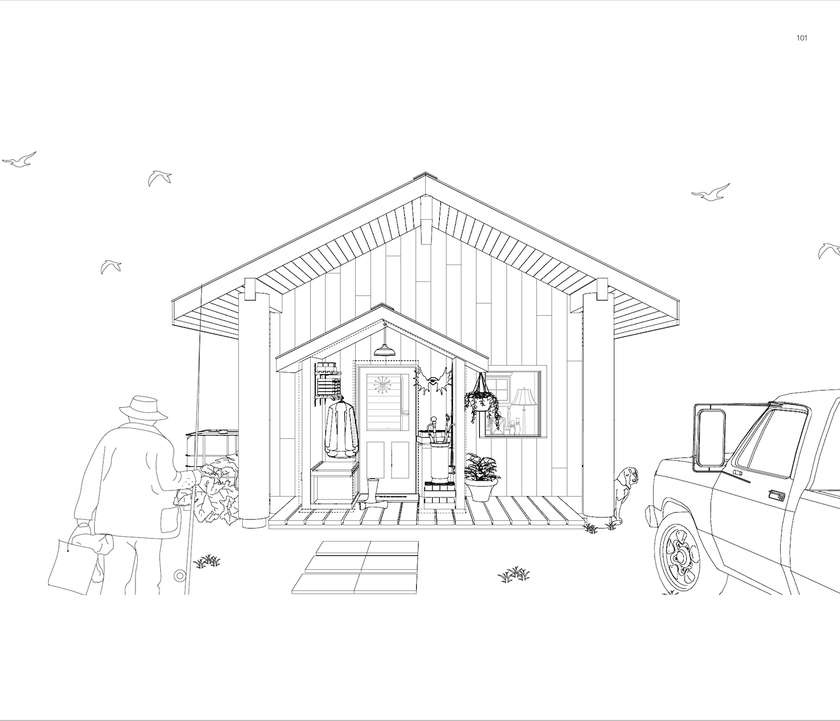
But it wasn’t until we focused on the mudroom where the specifics, and identify of the community became clearly identified. Such a small footprint is used as storage, sitting area, drying rack for rain gear, and as an additional pantry and freezer space during herring season. What this shows is that that are simple but important functional spaces that exist outside of the federally designed constraints of the home that directly respond to the regional and cultural context of a community